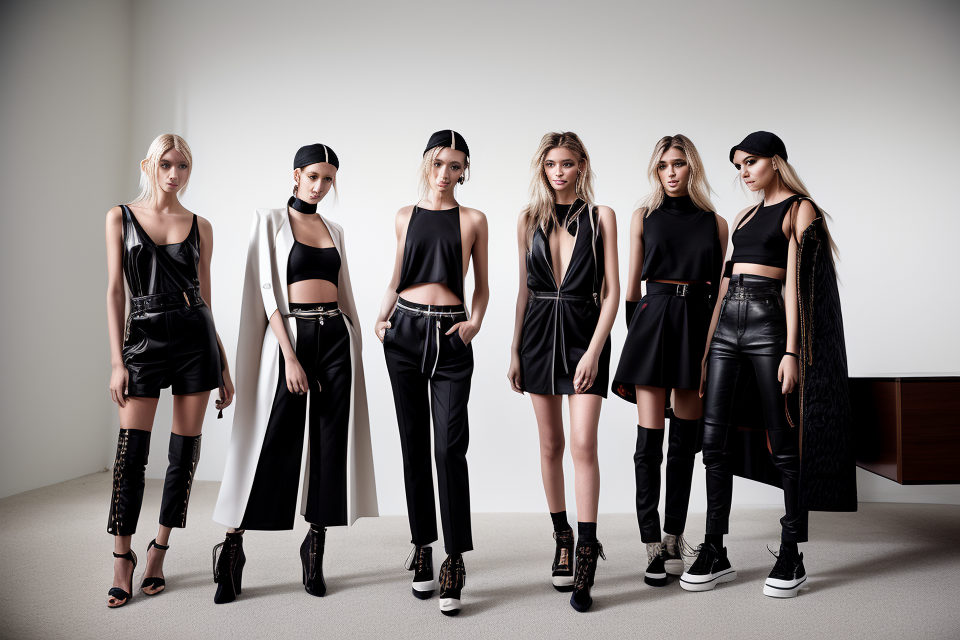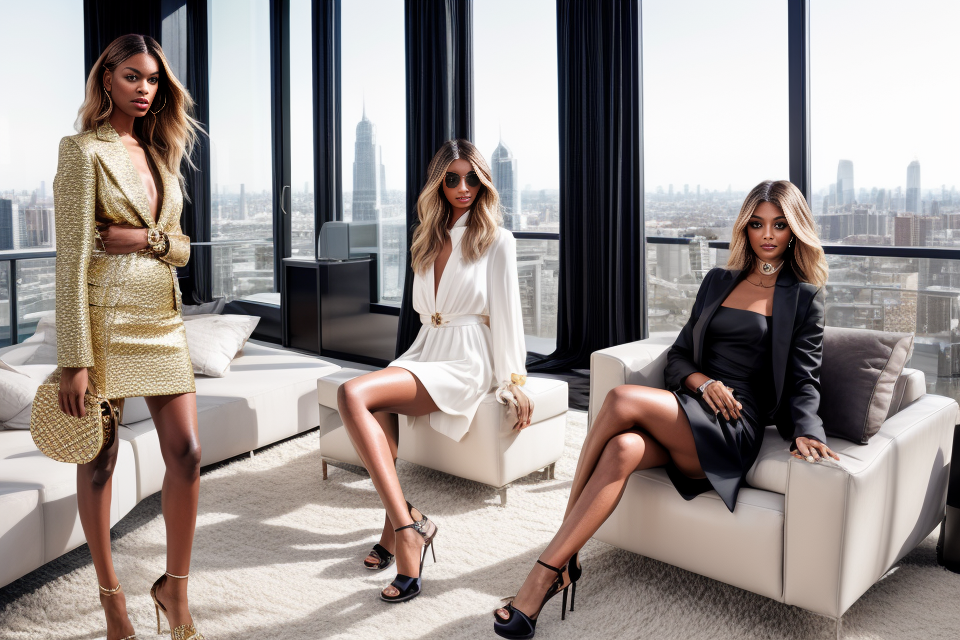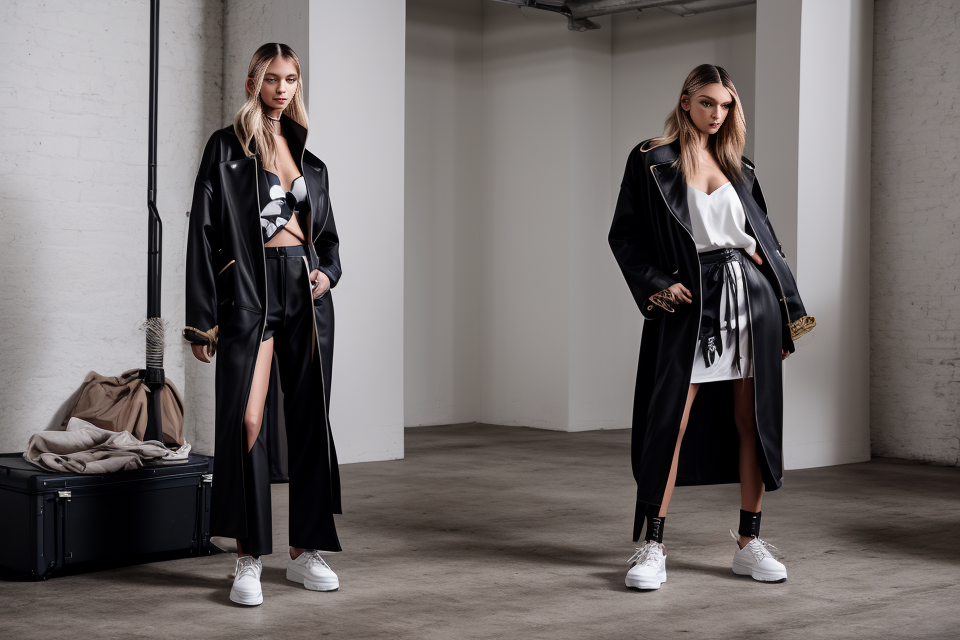
Fashion is more than just clothes, it’s a form of self-expression, a reflection of culture, and a way of keeping up with the latest trends. But what exactly is fashion? And how do different people perceive it? In this article, we’ll explore the different perspectives on fashion and what it means to different people. We’ll delve into the history of fashion, its role in society, and how it’s evolved over time. So, whether you’re a fashion enthusiast or just curious about the world of fashion, read on to discover what fashion really means.
Fashion is a dynamic and ever-evolving concept that encompasses a wide range of perspectives, from personal style to cultural identity. At its core, fashion is about self-expression and communication, as individuals use clothing and accessories to convey their unique personalities and values. From a cultural perspective, fashion is also a reflection of societal norms and values, with different cultures and subcultures developing their own distinct styles and fashion trends. Moreover, fashion is a multibillion-dollar industry that impacts the global economy and employs millions of people worldwide. Ultimately, understanding the different perspectives on fashion is essential for appreciating its complexity and significance in our lives.
Defining Fashion: A Historical and Cultural Overview
The Origins of Fashion: A Brief History
Fashion has been a part of human history for thousands of years, evolving alongside societal changes and cultural movements. To understand the origins of fashion, it is important to trace its development from early influences to the emergence of fashion as a distinct industry.
Early fashion influences and societal changes
Fashion has always been influenced by societal changes and cultural movements. In ancient times, fashion was used as a form of expression and a way to identify social status. For example, in ancient Egypt, people wore jewelry and clothing made from fine fabrics to show their wealth and power. Similarly, in ancient Greece, clothing was used to signify one’s occupation or social standing.
The role of fashion in ancient civilizations
Fashion played a significant role in ancient civilizations, with clothing and accessories often serving as symbols of power and status. In ancient China, for example, the emperor and his court wore elaborate robes and headdresses made from silk and gold, which symbolized their wealth and authority. Similarly, in ancient Rome, the senators and the wealthy classes wore lavish togas and ornate jewelry to show their status and power.
The emergence of fashion as a distinct industry
As societies became more complex, fashion began to evolve into a distinct industry. In Europe during the Middle Ages, for example, fashion was influenced by the church and the nobility, who wore elaborate robes and accessories. However, as trade and commerce grew, fashion began to become more widespread, with new styles and trends emerging from cities such as Paris and Milan.
In the 19th century, the industrial revolution and the growth of the textile industry led to the emergence of fashion as a distinct industry. Designers such as Coco Chanel and Christian Dior revolutionized fashion by introducing new styles and techniques, and fashion magazines and runway shows became popular platforms for showcasing new trends. Today, fashion is a global industry worth billions of dollars, with designers, retailers, and consumers all playing a role in shaping the latest trends and styles.
Fashion as a Cultural Phenomenon
Fashion can be viewed as a cultural phenomenon that reflects and shapes societal values, identities, and communication. Here are some key aspects of fashion as a cultural phenomenon:
- Fashion as a reflection of social and cultural values: Fashion is not just about clothing; it also reflects broader cultural values and beliefs. For example, in the 1960s, the hippie movement rejected materialism and embraced a more laid-back, casual style. This reflected a shift in cultural values away from the conformity and consumerism of the post-war era.
- The role of fashion in shaping and reinforcing identity: Fashion plays a crucial role in shaping and reinforcing individual and group identities. For example, in many traditional societies, clothing is a key marker of social status, occupation, and gender. In modern society, fashion choices can communicate political affiliations, sexual orientation, and even religious beliefs.
- Fashion as a tool for self-expression and communication: Fashion is not just a means of adornment, but also a way of expressing oneself and communicating with others. Clothing choices can signal personality traits, moods, and even intentions. For example, wearing a suit and tie may signal professionalism and seriousness, while wearing bright colors and bold patterns may signal creativity and extroversion.
Overall, fashion is a complex and multifaceted cultural phenomenon that reflects and shapes societal values, identities, and communication. Understanding these dimensions of fashion is essential for anyone interested in exploring the complex and ever-changing world of fashion.
Individual Perspectives on Fashion
Personal Style and Identity
Developing a personal style
Developing a personal style is an essential aspect of fashion for many individuals. It involves creating a unique look that reflects one’s personality, preferences, and values. This can be achieved by experimenting with different clothing styles, accessories, and hairstyles until one finds a combination that feels authentic and true to oneself.
The role of fashion in self-expression and communication
Fashion plays a significant role in self-expression and communication. Individuals use fashion to convey their personality, mood, and emotions to others. For example, someone might wear bright colors and bold patterns to express their outgoing and confident personality, while someone else might opt for darker, more muted tones to convey a more serious and professional demeanor.
Fashion as a means of conveying personal values and beliefs
Fashion can also be used as a means of conveying personal values and beliefs. For instance, someone might choose to wear sustainable and ethical fashion to express their commitment to environmental and social issues. Alternatively, someone might wear religious or cultural symbols to express their identity and beliefs.
Overall, developing a personal style and using fashion as a means of self-expression and communication are essential aspects of individual perspectives on fashion. By expressing their unique personalities and values through their clothing choices, individuals can feel more confident and authentic, and can connect with others who share similar interests and values.
The Influence of Social Media on Fashion
In recent years, social media has had a profound impact on the world of fashion. The rise of influencers and social media fashion trends has transformed the way individuals perceive and engage with fashion. In this section, we will explore the impact of social media on the fashion industry and how it has blurred the lines between fashion and personal branding.
- The rise of influencers and social media fashion trends
Social media has given rise to a new breed of fashion influencers who have the power to shape public opinion and dictate fashion trends. These influencers, who range from celebrities to everyday people, have amassed large followings on platforms such as Instagram and TikTok, and their opinions and style choices are closely watched by their followers. As a result, social media has become a powerful tool for fashion brands to promote their products and reach new audiences.
- The impact of social media on fashion industry
Social media has also had a significant impact on the fashion industry as a whole. Brands now have to contend with the fact that consumers have access to a wealth of information about their products and the industry as a whole. This has led to a shift in the way brands market their products, with many now focusing on creating engaging content and building relationships with their customers through social media.
- The blurring of lines between fashion and personal branding
Another consequence of social media’s influence on fashion is the blurring of lines between fashion and personal branding. In the past, fashion was often seen as a separate entity from personal branding, but social media has changed that. Now, individuals use fashion as a way to express their personal style and identity, and many influencers have built their personal brands around their fashion choices. This has led to a more personalized approach to fashion, with individuals seeking out unique and distinctive styles that reflect their personalities.
Sustainability and Ethical Considerations
Fashion, as a form of self-expression, has long been associated with personal style and aesthetics. However, the industry has come under increasing scrutiny in recent years for its impact on the environment and the treatment of workers. This has led to a growing awareness of the need for sustainability and ethical considerations in fashion.
The Environmental Impact of Fashion
The fashion industry is one of the largest polluters in the world, contributing to approximately 10% of global carbon emissions. Fast fashion, in particular, has been criticized for its wasteful and disposable approach to clothing production. This includes the use of non-sustainable materials, excessive water usage, and the production of textile waste.
The Role of Ethical Fashion in Shaping Consumer Perceptions
As consumers become more aware of the environmental and social impact of their purchases, ethical fashion has emerged as a way to address these concerns. Ethical fashion refers to clothing that is produced in an environmentally and socially responsible manner, taking into account the entire supply chain from raw materials to end-of-life disposal. By choosing ethical fashion, consumers can make a positive impact on the environment and support fair labor practices.
The Future of Sustainable Fashion
As the demand for sustainable fashion continues to grow, the industry is starting to adapt. Many fashion brands are investing in sustainable materials and production methods, while others are embracing circular economy principles such as recycling and upcycling. Consumers are also becoming more educated about the environmental and social impact of their purchases, leading to a shift towards more conscious consumption.
Overall, sustainability and ethical considerations are becoming increasingly important in the fashion industry. As consumers, it is our responsibility to make informed choices about the clothing we purchase and to support brands that prioritize sustainability and ethical practices.
The Industry of Fashion
The Fashion Industry: An Overview
The Structure and Functioning of the Fashion Industry
The fashion industry is a complex and dynamic system that involves various players, from designers and manufacturers to retailers and consumers. The industry operates on a global scale, with fashion trends and styles influencing consumer behavior across different cultures and markets. The fashion industry can be divided into several segments, including apparel, footwear, accessories, and beauty products.
The Role of Fashion Weeks and Runway Shows
Fashion weeks and runway shows are key events in the fashion industry that showcase the latest trends and styles. These events bring together designers, buyers, media, and influencers, providing a platform for networking and promotion. Fashion weeks and runway shows play a crucial role in shaping the direction of the industry, with designers using these events to launch their collections and gain exposure.
The Influence of Fashion Magazines and Media
Fashion magazines and media have a significant impact on the industry, shaping consumer preferences and influencing trends. These publications provide a platform for designers and brands to showcase their products and reach a wider audience. Fashion magazines and media also play a role in setting the tone for the industry, with editors and influencers often dictating the latest styles and trends. In addition, social media has become an important tool for fashion brands and designers to connect with consumers and promote their products.
The Business of Fashion
The fashion industry is a complex and multifaceted business that encompasses a wide range of activities, from design and production to marketing and retail. The industry is characterized by a highly competitive market, rapid changes in consumer preferences, and a constant drive for innovation.
The Economics of the Fashion Industry
The fashion industry is a significant contributor to the global economy, generating hundreds of billions of dollars in revenue each year. The industry is characterized by a complex supply chain, with raw materials sourced from around the world and products manufactured in various countries before being sold to consumers in different markets.
The Role of Fashion in Driving Economic Growth
Fashion has played a critical role in driving economic growth in many countries, particularly in the developed world. The industry provides employment for millions of people, from designers and manufacturers to retail workers and marketers. Additionally, the fashion industry is a significant contributor to government revenue, with taxes on sales, imports, and exports generating billions of dollars in revenue each year.
The Challenges and Opportunities of the Modern Fashion Industry
The modern fashion industry faces a range of challenges, including rapidly changing consumer preferences, increasing competition, and the rise of online retail. However, these challenges also present opportunities for innovation and growth, with companies that are able to adapt to these changes likely to succeed in the long term. Additionally, the fashion industry is increasingly focused on sustainability and ethical practices, with many companies implementing measures to reduce their environmental impact and improve working conditions for employees.
FAQs
1. What is fashion?
Fashion is a form of self-expression that involves the creation and use of clothing, accessories, and other adornments to create a particular image or impression. It encompasses a wide range of styles, trends, and cultures, and can be influenced by a variety of factors such as social, economic, and cultural conditions.
2. How does fashion reflect cultural differences?
Fashion is often influenced by cultural differences, as different cultures have their own unique styles, traditions, and values that are reflected in the way they dress. For example, traditional African clothing may include bright colors and bold patterns, while traditional Japanese clothing may feature simpler, more minimalist designs. In addition, fashion can also be used as a way to express cultural identity and pride.
3. How does fashion reflect social and economic conditions?
Fashion can also reflect social and economic conditions, as people often use fashion to express their status, wealth, and social position. For example, luxury brands and designer clothing may be associated with high social status, while more affordable and practical clothing may be associated with lower social status. In addition, fashion can also be influenced by economic conditions, such as recessions or booming economies, which can affect the types of clothing and accessories that are popular.
4. What is the history of fashion?
The history of fashion is long and complex, with roots dating back to ancient civilizations. Over time, fashion has evolved to reflect changing social, economic, and cultural conditions, and has been influenced by a variety of factors such as art, music, and technology. Today, fashion is a global industry with a significant impact on the economy and culture.
5. How has fashion changed over time?
Fashion has changed significantly over time, with new styles, trends, and technologies continually emerging. For example, in the past, fashion was often dictated by royalty and the wealthy, while today, fashion is more democratic and accessible to a wider range of people. In addition, fashion has become more global, with influences from different cultures and regions now more prevalent than ever before.


